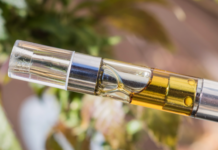Now that cannabis is legal from coast to coast, how does Canada’s “recreational” market differ from the medical cannabis system that was first established by Health Canada in 2001?
Earlier this year, the Canadian Medical Association submitted a proposal to Health Canada arguing that there was no need to have separate systems for medical and recreational cannabis.
In contrast, the Canadian Nurses Association has been in favour of two distinct systems, and worries that collapsing both into one would cause retailers to prioritize recreational users over medical users.
The Government of Canada has stated that it is committed to keeping a distinct system for medical patients with quality-controlled product. But what’s the difference?
Pricing
Recreational
Now that adult-use cannabis is legal, it is subject to taxes and retail markups. Our province by province comparison turned up strains for as low as $6.99 per gram but costs start to soar after taking into account provincial taxes and shipping costs which are unavoidable in areas without access to brick-and-mortar stores.
Currently, the territories have the highest prices for legal cannabis in the country, a single gram could run nearly $27 in the Northwest after taxes and delivery.
Prior to legalization, Canadians reported paying an average of $6.83 per gram according to Statistics Canada.
Medical
Pricing for medical cannabis is more stable and will likely remain so. Medical users won’t have to deal with inflated prices resulting from supply shortages.
However, legalization of recreational cannabis has led to a tax hike among medical users and they are upset.
The government has synched up taxes for medical and recreational cannabis, arguing that doing so will discourage recreational users from abusing the medical system. However, some worry that increased taxes will drive medical users to the black market for lower prices.
Unlike recreational users, who are subject to geographical boundaries for purchasing legal cannabis, medical users can seek out the best price and quality for their needs, and order cannabis from outside of their province.
Quality
Recreational
In the newly regulated market, licensed producers for recreational and medicinal cannabis are both required to meet the same standards ensuring cleanliness of facilities and equipment, as well as laboratory testing for cannabinoid content, pesticides, and microbial and chemical contaminants.
Stringent packaging rules mean the potency is always advertised, so those seeking intoxicating effects can opt for higher THC potency while medicinal cannabis consumers may prefer CBD products that do not produce psychoactive effects.
Medical
Medical cannabis patients do, however, have greater access to a larger selection of flowers and oils than recreational users according to Puff Puff Post. The Ontario Cannabis Store, for example, carries product from 129 licensed producers in Canada but, at the moment, it sells only five oral THC and CBD sprays, no ingestible oils or capsules and just two CBD strains.
Accessibility
Recreational
Canadians are facing serious challenges acquiring adult-use cannabis. Since legalization on Oct. 17, retailers across Canada have been selling out of legal recreational cannabis online and in bricks-and-mortar stores.
In Quebec, the SQDC has cut back operations closing stores from Monday to Wednesday until further notice. Meanwhile, in Alberta, the lack of inventory has reportedly delayed new stores from opening and forced the province to reassess its process for distribution.
Accessibility to recreational cannabis in the post-legalization era will likely continue to be hindered as Canada figures out how to respond to growing demand and little supply.
Medical
Patients authorized by their health care provider can access a well-established system, meaning that medical cannabis consumers don’t have to deal with the same colossal frenzy as recreational users.
According to Strategy Online, National Access Cannabis has added 70 independently owned pharmacies to its roster of medical cannabis distributors for a total of 111 in Ontario, British Columbia, Alberta, and Saskatchewan. This number is set to rise to 150 by early 2019.
In addition to this, Shoppers Drug Mart could soon start dispensing cannabis to patients. Health Canada approved the pharmacy giant’s application to become a licensed producer in September, though the chain still requires a sales license.
Because the medical system is separate from the recreational system, medical users in this country have not been deprioritized in their access to cannabis.















